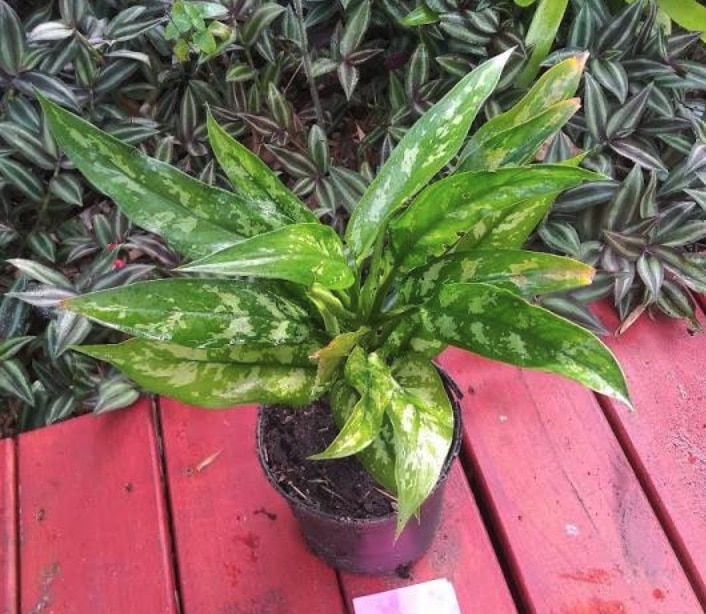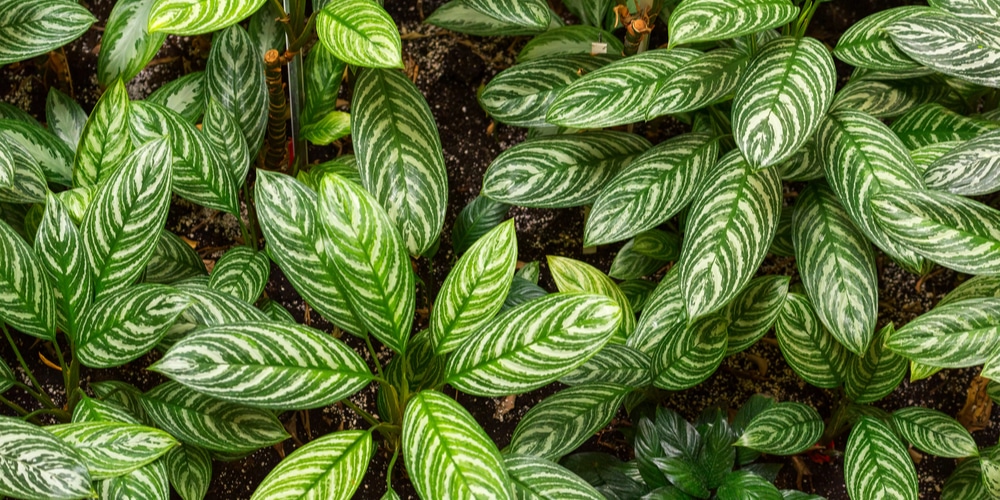As the name suggests, the Aglaonema Emerald Beauty is a very attractive houseplant and is popular worldwide. This plant is easy to care for and can thrive in various conditions as it’s relatively hardy. The Aglaonema Emerald Beauty is an excellent houseplant for your home or office.
The Aglaonema family consists of many varieties of plants; some can be grown outdoors in the right conditions, while others should only be kept as houseplants. The care for all the plants in this family are similar, and the Aglaonema Emerald Beauty is often called a Chinese evergreen or referred to as Maria. Let’s look at how to grow and care for an Aglaonema Emerald Beauty plant.
What is an Aglaonema Emerald Beauty Plant?
Aglaonema Emerald Beauty plants are tropical plants that originate from Asia. They are commonly found growing in tropical and subtropical regions and have a bush-like growing habit. These plants can grow fairly tall in the right conditions, and it’s not uncommon for a house plant to grow to 4 feet in height. However, with the right pruning and by growing your plant in a smaller pot, you can keep your houseplant smaller and more manageable.
It has lovely glossy foliage which comes in various hues of green. The plant will typically become lighter if it’s grown in an area of higher light levels. These plants can also thrive in areas of lower light or in partial shade and will have a lovely deep green color.
Caring for an Aglaonema Emerald Beauty Plant
The Aglaonema Emerald Beauty is relatively easy to care for. However, they do have some specific care requirements. To grow a healthy, thriving plant, you may like to consider the following care tips:
Watering needs
The amount of water your Aglaonema Emerald Beauty requires will depend on whether it’s growing in an area with lots of sunlight or in a more shaded location. Consider the climate where you live and the humidity when working out how much water your plant requires.
Aglaonema Emerald Beauty plants do well with the ‘soak and dry’ method of watering. You can soak your plant and then leave it to dry out completely before watering again. In general, it’s best to water your plant every couple of weeks. You can test the soil by pushing your finger into the ground. Only water if your plant’s soil is dry, as overwatering can cause root rot.
If cooler climates and if your plant is placed in a low light area, it will require less water. Allow the soil to dry out completely before watering again.
Temperature
This tropical plant is relatively heat and drought resistant. They thrive in temperatures that are at least 60°F. Be careful not to leave your plant outdoors in the winter or near a draughty window. These plants aren’t very cold tolerant, and you may find that your plant begins to wilt and turn brown due to the cold. In most cases, the average temperature of your home will be fine for the Aglaonema Emerald Beauty.
Lighting
Aglaonema Emerald Beauty can thrive in various levels of light but should not be kept in the full sun. If you leave your plant in the sun, it will likely start to wilt, and its leaves may also get sunburnt. Be aware that your plants can also burn through glass, so don’t leave this plant on a hot windowsill.
Aglaonema Emerald Beauty plants can be kept in partial shade or in rooms with low light. However, this may affect their appearance, and the plant could end up looking thin and leggy as it will grow towards the light. This may make your plant weaker. Aglaonema Emerald Beauty grows well under artificial fluorescent lights, which makes them an excellent choice for offices.
Pruning
Emerald Beauty plants can be pruned slightly to improve their appearance and encourage new growth. You can remove old leaves that look tattered or damaged. It’s best to completely remove the leaves and stems by pulling them by hand. Don’t cut off the leaves and leave behind a stump, as this may allow for fungal disease to grow or could attract insect pests.
Conclusion
The Aglaonema Emerald Beauty is a lovely tropical plant that can be grown in homes and offices. It can also be grown outdoors in hot, humid locations. These plants originate from subtropical regions of Asia and aren’t very tolerant of the cold, so they shouldn’t be left outside in fall and winter if the temperature is likely to drop dramatically.
You may also be interested in Aglaonema Silver Bay, which is a beautiful alternative to this plant.

